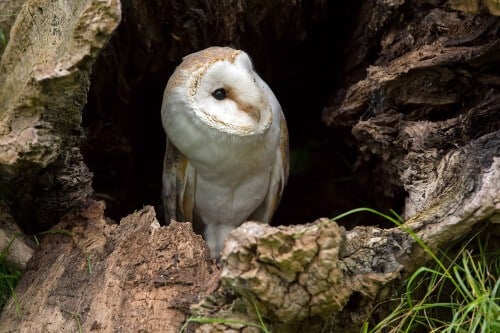Chemical pest control (spraying) in agriculture is dangerous for the environment and for humans. A possible solution is biological control - various living creatures, from bacteria to birds of prey, whose job it is to eliminate pests that damage crops

Written by: Ariel Kers, Young Galileo
The human population in the world is very large, and all the hungry mouths must be fed with agricultural products - bread, corn, potatoes, vegetables and fruits. Man develops new technologies of advanced agriculture, fertilization, irrigation and optimal use of the land. But agriculture on such a large scale also has many disadvantages. One of them is the high vulnerability of crops to pests. For example, in the 19th century, a parasite damaged the potato crop in Ireland and caused them to get sick with blight. The result was a severe famine that hit the residents hard. Many of them died, and many more left the island and emigrated to other countries.
The problem: pests and invasive species
When I was a child we worked in the children's farm in the kibbutz. We grew asparagus there in a large plot to feed the animals of the children's farm. One day we discovered that larvae of Prudenia (a species of moth) had begun to devour the green alfalfa. Within a few days the whole field was yellow and purple because the prodania larvae had corrupted it.
When large quantities of vegetables and fruits of the same type are grown in a large area, the pests of that crop thrive - they have plenty of food! Among the pests we can name insects such as flies, beetles, and the prodania moth as well as fungi and bacteria. Another problem is invasive species that arrive in the country (we will soon have a special section for them) - they have no natural enemies to restrain them, and thus they cause tremendous damage to certain plants. How do you fight pests and invaders? usually by spraying with pesticides. But the pesticides are toxic, pollute the soil and water, harm beneficial animals, and many people do not want to eat food that has been sprayed.
possible solutions
There are different ways to avoid spraying fruits and vegetables (called chemical pest control), by preventing the pests from reaching them. For example by nets or growing in huge planters that hang in the air. However, most crops are still sprayed. Chemical pest control may be quite effective, but in the long run it also causes damage: the sprays also exterminate "good" insects and damage the ecological balance, they are toxic and may also harm humans in the long run.
It seems that biological control is the best solution for fighting agricultural pests. Biological control is a proactive human intervention in an ecosystem, to curb the pest with ecological means and biological methods. In large ecosystems, for example, Gambusia fish and the Israeli Bacillus bacterium (BTI) are used to control mosquitoes. In agriculture, predatory insects are often used to eat the pests.
What's going on in the world?
As agriculture in the world expands and its areas increase, there is a greater need for biological control. The most developed and studied area of biological control today is the use of the natural enemies of arthropod pests (such as insects and arachnids), which damage various crops. Bacteria that harm pests or birds of prey that eliminate rodents that harm the fields are also used. In the world it is customary to import and acclimatize foreign natural enemies of the pests, but this approach can be problematic - some of the imported species become invasive species, such as the cane toad, which was brought to Australia to fight local pests and later became an invasive species.
What is happening in Israel?
Agriculture in Israel is developed and very advanced in all fields, including in the field of biological control. The Ministry of Environmental Quality supervises the extermination of insects in the fields and prefers the ecological approach. If you visit, for example, the Hula Valley, you will see in the fields and orchards many small nests (breeding nests) on poles - these invite birds of prey and birds of prey to nest in them, and in the process devour the navrans (a species of mice) that harm the fields. Israel also excels in the export of predatory insects abroad. For example, the UB plant from Kibbutz Sde Eliyahu supplies South Africa (parts of which have weather and crops similar to ours) with predatory insects and parasitic wasps that eliminate aphids that damage citrus and vines.
What does the future hold?
The fight between scientists and pests is constantly increasing, and man is trying to find solutions to control pests with as little damage to the environment as possible. Since it seems that the world's population will only continue to grow, it will be necessary to refine the biological pest control to keep up with the global demand for agricultural produce and the ability of the pests to deal with the pest control methods that humans apply to them. Today, our knowledge of pests, their genetics and their methods of action is increasing, and therefore we can hope that in the future we will not have to suffer severe damages to agriculture like those caused by the thyme parasite in Ireland.
The article appeared in the July issue of Young Galileo – Monthly for curious children
Want to read more? To receive a young Galileo magazine as a gift

One response
again
The writers confuse: species with type
It says: "Caterpillars of Prudenia (a type of moth)"
Prodonia is a species (not a genus) in the moth family...
It is appropriate that the authors internalize the sorting method
And avoid mistakes...